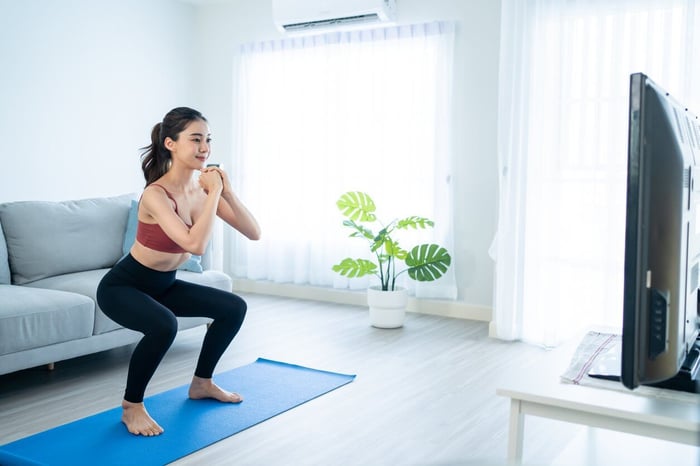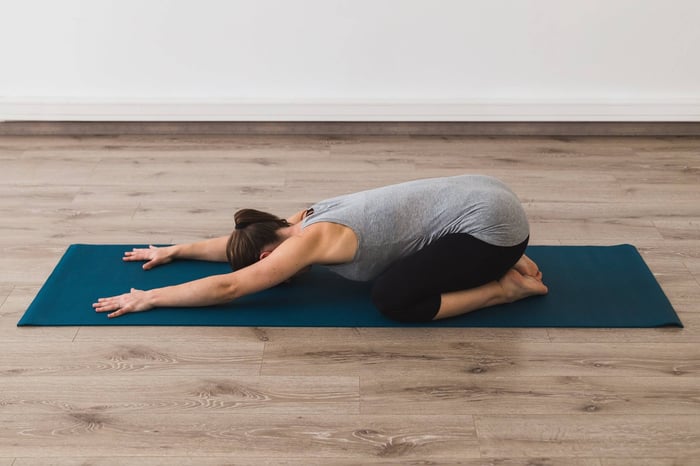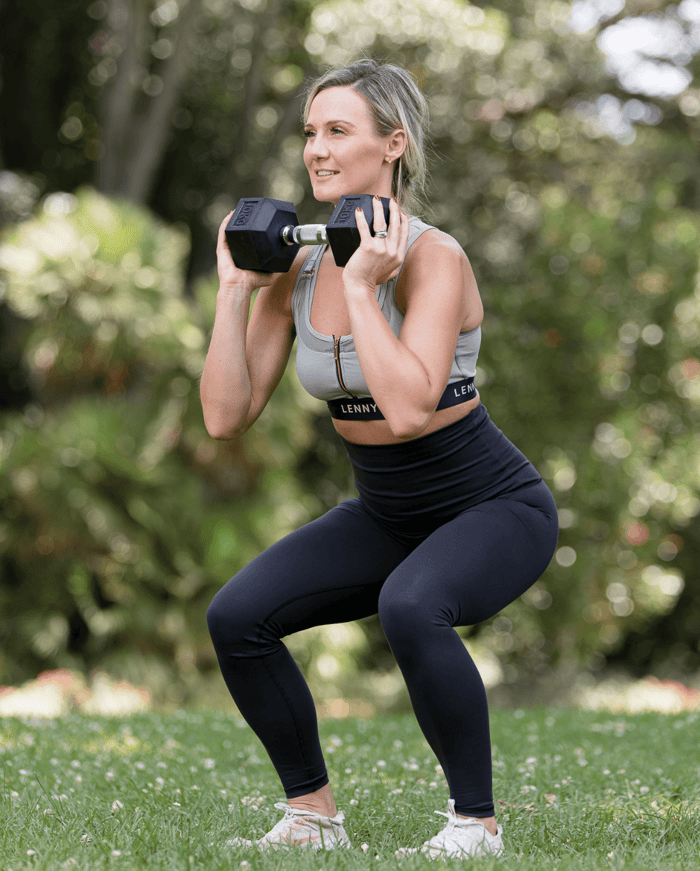Because Running to the Bathroom Shouldn't be your Cardio...
Dealing with light bladder leaks can feel frustrating or even isolating—but you're not alone, and there are practical, proven ways to manage and often reverse them. Whether you're navigating postpartum recovery, aging changes, or stress incontinence, small daily habits can make a big difference. In this blog, our resident women’s health trained physiotherapist Rosie Dumbrell shares five simple yet powerful strategies to support bladder health and strengthen pelvic floor function—helping you feel more in control, confident, and comfortable in your body.
Tip 1: Pelvic Floor Muscle Exercise.
Why it helps: Improving Pelvic floor muscle function can improve bladder control and reduces light bladder leaks over time. However, not everyone needs pelvic floor muscle strengthening, sometimes its necessary to “downregulate” or reduce muscle activity in the pelvic floor to reduce bladder and pelvic health symptoms. Read on to find out more!
How to Strengthen Pelvic floor muscles:
Identify the right muscles: It can be tricky to identify the correct muscles. We usually start with cueing “use the muscles that you would to stop the passage of wind, then urine, and lift up and in like an elevator rising.” Or “zipping up” the muscles from the back passage to the front and up and in.
Technique: Sit or lie down comfortably. Take an inhale breath, and then on the exhale, “Contract your pelvic floor muscles by squeezing the muscles you use to stop the flow of urine, then wind, then lift up and in like an elevator rising.’
Relax for 3–5 seconds. Utilising your normal breath mechanics can really help - as on on inhale breath the pelvic floor usually descends, or relaxes, and an exhale breath there is a natural lift of the pelvic floor.
Dosage: Repeat 10–15 times, practise daily!

For light bladder leaks when you cough, sneeze, jump or run, you can also do some short but closer to maximal lifts which match the force required to keep you leak free under the increased pressure of these activities! Start with 5 x maximal lifts - also known as “quick flicks" (i.e. quickly lift as much and as high as you can) and let go. Repeat this up to 5x
Building up endurance can also be helpful - find the length of time that you feel like you can maintain a good pelvic floor lift and squeeze, (say for example 5 seconds, 10 seconds) and try to lift and hold for this longer amount of time up to 10 times.
Make it functional - whilst mastering the correct technique is super important - and laying or sitting can help to make this easier - we also want to make it functional as soon as possible to have the best effect.
You can start to utilise pelvic floor lifts in daily activities - like squatting, bending over - utilizing the exhale and a pelvic floor lift to upright yourself. You can also recruit your pelvic floor whenever you lift or pick up your baby, a moderately heavy object, and also start to incorporate into your other exercises like pilates/ yoga.

However, for some women, strengthening the pelvic floor is not the answer.
It’s common to have a high-tone pelvic floor, meaning its “on” when it shouldn’t be. If you have symptoms that are not improving with pelvic floor strengthening, or that are worsening, you may need to add in, or revert to pelvic floor downregulation. This means letting your pelvic floor muscles relax, which you can do by:
Lengthening positions - child’s pose, Yoga Squat on a block, supine butterfly position with your legs.
Using breathing is really key, deep breaths into your abdomen
Using visualisation can also help - think about a lotus flower unfolding, or butter melting

Nervous System Down regulation. A high-tone pelvic floor often goes hand in hand with a nervous-system that is in “fight-or-flight’ - which 70% of us live in most of the time!!! There are many tools you can utilise to help down- regulate the sympathetic nervous system - or fight or flight - including guided relaxation, meditation, breathing based practices. However, if you have a history of trauma, its generally recommended to seek a trauma-informed pelvic health therapist rather than going it alone - sometimes meditation and mindfulness aren’t exactly what you need.
Other Tools to help:
Use Pelvic Floor trainers like the Juno Fem which comes with an app to support your learning, and guided practice.
Consult a pelvic floor physiotherapist for tailored support - especially if you are finding it hard to feel where your pelvic floor muscles are, you have persistent leakage pain, other pelvic health symptoms, or a history of trauma.
Tip 2: Get Regular!
Why it helps: Your bladder and bowel health are intimately linked - so one of the first tips is always to ensure you have good bowel habits, to ensure these aren’t contributing to bladder leakage symptoms.
Top tips for bowel health and maintaining regular and easy bowel movements:
Drink plenty of fluid (yep - even if you are worried about leaks - limiting hydration can make things worse)
Ensure your diet is high in fibre, so that you have regular and soft bowel movements. This can come in the form of plenty of fruits, vegetables, legumes and grains, to name a few high fibre foods. You can also utilise a fibre supplement like Osmolax if you need to get things re-booted.
Avoid straining on the toilet - “pushing” or “straining” can make your bladder symptoms worse, as the bearing-down action stresses and stretches, and potentially weakens the pelvic floor - which you have learnt are really crucial for bladder health!
Utilise a low step when sitting on the toilet - so your knees are elevated slightly higher than your hips. You can use a Squatty Potty, or a step variation you may already have at home. This allows for easier bowel movements.
Tip 3: Hydration
Why it helps: Dehydration can irritate the bladder, while drinking large amounts at once or infrequently can contribute to urinary urgency or urge incontinence.
Do:
Drink 6–8 glasses of water daily. Too little = concentrated urine, which may irritate your bladder further. Too much fluid and in large amounts (like chugging a large glass quickly!) at once can also contribute to urinary urgency, so ideally consume water throughout the day, and stick to 6-8 glasses - you don’t need to go crazy on drinking litres and litres of water per day.
Avoid:
- Bladder irritants, which can include: Caffeine (coffee, tea) Alcohol, Carbonated drinks, Citrus, tomatoes, spicy foods, Artificial sweeteners.
 Image Caption
Image Caption
Tip 4: Posture and Core Strengthening
Why it helps: Proper posture reduces pressure on your bladder and improves pelvic alignment and support.
Strategy 1 - Check your posture when standing and sitting:
Feet flat, knees at hip level
Neutral spine, shoulders relaxed
Avoid slouching (which weakens core muscles)
Strategy 2 - Incorporate core-strengthening exercises:
Modified planks (on knees)
Bridge pose
Transverse abdominis activation: pull your belly button toward your spine and hold.
Yoga & Pilates can help restore core-pelvic coordination. We love health practitioner led programs such as Core and Floor Restore, Move with Mama - by Jess Kostos, Movement by Amy - Amy Carmody Yoga.
Tip: Engage your core and pelvic floor before coughing, sneezing, or lifting (called “The Knack”).
Tip 5: Use Everform Therapywear for Support & Confidence
Why it helps: High-quality, clinically-backed incontinence recovery wear supports healing, encouraging you to get back to doing the things you love - and compliments your recovery toolbox.
Everform Therapywear:
- Is designed by a physiotherapist who gets it
Is designed specifically for recovery from bladder leaks – not just absorption.
Features targeted compression, pelvic floor support, and breathable materials.
Discreet and washable – far more sustainable and supportive than pads or disposable underwear.
Where to get it:
👉 Everform Therapywear Incontinence Recovery Briefs
Bonus Tip: Use Everform briefs during workouts or while practicing bladder training for added confidence.

Final Encouragement:
Light bladder leaks are common, manageable, and often reversible. By consistently practicing the above tips and seeking support when needed, you can regain confidence and control.





